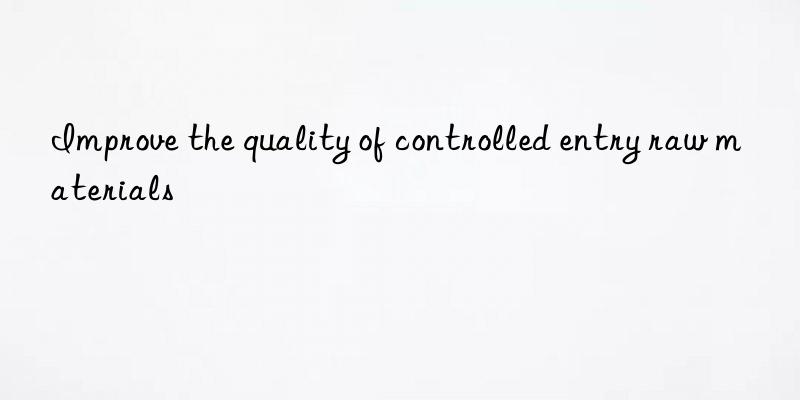
(1) Reasonably control cement fineness and grading. There is a common misunderstanding in the industry that the finer the cement, the better, which is good for water retention. The key is to see whether the particle gradation of the cement is reasonable. If the cement gets damp during storage and transportation, it will inevitably cause bleeding and segregation of the concrete. Therefore, to solve the problem of concrete bleeding and segregation from the perspective of the main cement material, the cement manufacturer should conduct quality control such as fineness, particle distribution, strength, stability, temperature, and moisture resistance. The industry believes that the cement supplied by manufacturers for commercial concrete should be tilted in the direction of pure Portland cement. The mixing station should reasonably add active admixtures and other mixing materials based on the structural location, strength and actual production conditions, and at the same time adjust the adaptability of the admixtures. Test and adjust to determine the appropriate dosage. It can be used only after meeting the adaptability requirements with admixtures.
(2) Reasonable use of active admixtures. Using high-quality fly ash, slag powder and other admixtures can effectively avoid problems that cement cannot solve. Fly ash produced by the manufacturer is used. Its morphological effect, aggregate effect, and activity effect can improve the cohesion, water retention, and fluidity of concrete to a certain extent. It is widely used in low-strength, large-volume, and hydraulic concrete. ; At the same time, active admixtures such as fly ash and slag powder are less dependent on admixtures and have better slump retention performance, which is beneficial to the loss of concrete over time. Therefore, it is more suitable for application in large-volume, high-strength, and high-performance concrete. Therefore, adding ultra-fine active or inactive admixtures to low-strength concrete will greatly increase the viscosity of the concrete, thereby effectively solving the phenomenon of concrete bleeding and segregation.
(3) Reasonable use of different water reducing rates, models, and types of admixtures. Bleeding and segregation phenomena often characterize the adaptability of admixtures and cement. Therefore, the rational use of admixtures with different water reduction rates, models, and varieties can effectively improve the adaptability problems with cement. According to many years of practical experience, ordinary high-efficiency water-reducing admixtures are used for concrete with strength grades below C40, and the water reduction rate is usually within 25%. It is more appropriate to use high-performance admixtures for concrete with C40 and above grades, which can effectively ensure the strength and workability of concrete. Avoiding quality problems such as bleeding and segregation can also reduce unit costs.
According to the actual structure, strength and other special requirements, in the case of raw material variation, change the type of admixture such as high-efficiency retarder to ordinary, high-performance to high-efficiency, etc. When the model cannot meet the requirements at the same time, change the type such as naphthalene series Changing from polycarboxylic acids and lipids to ethers, etc. can effectively eliminate bleeding and segregation quality hazards and other performance confusion.
Of course, according to the performance defects of the admixture, some reinforcing agents, thickeners, retardants, slump retaining agents, etc. can be added appropriately to make slight adjustments to improve the strength and other properties of the concrete mixture.
(4) Select high-quality, continuously graded sand and gravel aggregates. The sand fineness modulus is controlled at 2.3 to 3.0. In the medium sand II zone, the mud content, mud content and other indicators meet the requirements of JGJ52-2006. Similarly, the gravel should be continuously graded from 5 to 31.5mm and 5 to 20mm and crushed. The value, mud content and mud block content all meet the above standard requirements. Selecting high-quality, continuously graded sand and gravel can effectively change the porosity of concrete, increase density, and improve bleeding and segregation of concrete. </p

 微信扫一扫打赏
微信扫一扫打赏

